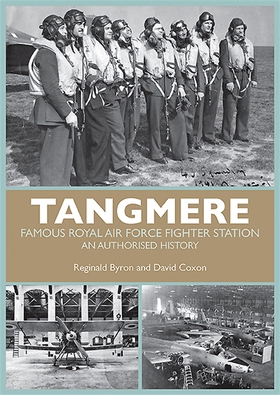
Lägg till önskelistan
Tangmere e-bok
Pris
115 kr
This is the first full history of the Royal Air Force fighter station at Tangmere, West Sussex, from its beginnings in the First World War until its untimely closure in 1970. In its day, it was one of the best-known and strategically most important fighter stations in the British Isles. Tangmere first became prominent in the 1920s and 1930s for the highly polished air displays given at the RAF Pageants at Hendon by the pilots and aircraft of its resident squadrons, 1 and 43. On the outbreak o...
E-Bok
115 kr
Pris
Förlag
Grub Street
Utgiven
16 Februari 2021
Längd
352 sidor
Genrer
Historia & Arkeologi, Samhälle Och Politik, Fackböcker
Språk
English
Format
epub
Kopieringsskydd
Vattenmärkt
ISBN
9781909808645
This is the first full history of the Royal Air Force fighter station at Tangmere, West Sussex, from its beginnings in the First World War until its untimely closure in 1970. In its day, it was one of the best-known and strategically most important fighter stations in the British Isles. Tangmere first became prominent in the 1920s and 1930s for the highly polished air displays given at the RAF Pageants at Hendon by the pilots and aircraft of its resident squadrons, 1 and 43. On the outbreak of the Second World War, 1 Squadron was the first RAF squadron to be sent to France. With the fall of France in May 1940, Tangmere’s squadrons found themselves right on the front line and during the Battle of Britain Tangmere was one of the main fighter stations constantly engaging with the deadly Luftwaffe. Tangmere’s Hurricane and Spitfire pilots continued heroically to defend southern England for the next three years and turned increasingly to an offensive role, led by Wing Commander Douglas Bader. Squadrons at Tangmere were heavily involved in Operation Jubilee, the combined raid on Dieppe, and continued over the years to harass the enemy across the Channel with increasing accuracy, ferocity and persistence, culminating in a pivotal role in Operation Overlord, the D-Day landings.
After the war Tangmere settled into a peacetime routine, became home to the High Speed Flight and the World Air Speed Record was broken there in 1946 and again in 1953 by Neville Duke. As the cold war set in Tangmere was no longer well positioned as an interceptor station and by the end of 1958 Fighter Command had withdrawn its last squadron. The airdrome was used by Signals Command for six years or so then served as a home to various non-flying units until its decommissioning in 1970. It is now a highly prized museum with many valuable artifacts and aircraft. Expertly told with use of official diaries and operations record books this is a long-awaited, comprehensive and conclusive account of a fascinating fighter station and its neighboring airfield Ford.




